Most Americans like to think their military is a tool for preserving the freedom and well-being of people throughout the world. Generations of American soldiers have indeed performed noble and heroic feats in defense of these values. However, since the earliest days of the nation, encounters with the US military have often meant death and destruction, as opposed to freedom and justice. From the American Revolution to the War on Terror, soldiers from every generation have taken part in atrocities of one form or another. If there is any hope for preventing American war crimes in the future, the past transgressions of the US military must be acknowledged and, when possible, the perpetrators brought to justice.
10. The Balinga Massacre, Philippine-American War
During the Spanish-American War in 1898, American forces captured the Philippines. Although the Americans viewed themselves as liberators, Filipinos had been struggling against Spanish imperialism for years. They did not take kindly to one imperial power being replaced with another. What followed was the Philippine-American War, a savage exercise in jungle combat.
After suffering heavy casualties from Philippine insurrectionists in the Samar Province, General Jacob H. Smith sought revenge against the civilian population. He stated, “I want no prisoners. I wish you to kill and burn: the more you kill and burn, the better you will please me.”
General Smith’s troops proceeded to carry out a genocidal campaign in the countryside. He ordered anybody over ten years of age and capable of bearing arms to be executed, and herded thousands more into concentration camps.
Unfortunately, these actions were only a microcosm of the larger brutality of America’s occupation of the Philippines. It is estimated that at least 34,000 Filipinos were killed as a direct result of the war, and another 200,000 by the cholera epidemic among refugees and those in concentration camps.
9. No Gun Ri Massacre, Korean War
When North Korean forces launched a surprise attack on South Korea on June 25, 1950, poorly trained American soldiers from Tokyo were rushed to the peninsula. The invasion created a massive refugee crisis, as civilians fled the oncoming armies. Fearing infiltration by spies posing as civilians, US command forces ordered that no civilians were to be allowed to cross battle lines at any time.
On the same day these orders were issued, up to 400 refugees gathered at a bridge near the village of No Gun Ri were indiscriminately massacred by American forces.
US forces initially denied involvement, stating that no American troops were in the vicinity at the time of the massacre. However, details of the slaughter have emerged in recent years, thanks to the testimonies of both the survivors and perpetrators. As one American veteran recalls, “There was a lieutenant screaming like a madman, fire on everything, kill ’em all … Kids, there was kids out there, it didn’t matter what it was, eight to 80, blind, crippled or crazy, they shot ’em all.”
Unfortunately, this was only the first of many such massacres by American forces in Korea that have come to light in recent years. There has been no justice for the surviving South Koreans either, as the only person to face charges for the crime, Captain Ernest Medina, was court martialed but later acquitted.
8. Gnadenhutten Massacre, American Revolution
Life as a settler on the frontier during the American Revolution was an isolated, brutish, and violent place to scrape out an existence. Front lines were non-existent, and there was no chivalry in frontier warfare. There are certainly countless atrocities history will never uncover, but one that stands out is the Gnadenhutten Massacre.
On March 8, 1782, 160 Pennsylvania militiamen surrounded the village of Gnadenhutten in Eastern Ohio. Although the residents of the village were Indians, they were peaceful Christians and neutral in the fight. Nevertheless, the militiamen accused them of conducting raids throughout Pennsylvania, and voted to execute every inhabitant.
The Indians were split into to huts, one for men and the other for women and children, and then bludgeoned to death before being scalped. In all, ninety-six of the one hundred Indians were scalped and killed, and the entire village was set ablaze. One survivor hid in the woods, and others actually survived their scalping and escaped to warn surrounding villages.
7. Andersonville Prison, Civil War
You might think this NSFW picture is that of a newly liberated prisoner from the Nazi concentration camps. But this man was actually a Union captive held at the POW camp in Andersonville, Georgia during the Civil War.
Life for soldiers on either side of the conflict was a harrowing experience, no matter where they were stationed. Yet arguably the worst place to end up in the entire war was the Camp Sumter military prison in Andersonville. As the largest Confederate prison, the camp was designed with a maximum capacity of 10,000 prisoners. By August 1864, the number of prisoners had swelled to 33,000.
Conditions in the camp were nightmarish. The Confederates were desperately low on provisions for themselves, which meant the POWs got next to nothing. The men had no shelter from the blazing summer sun or the cold winter rain. The small stream flowing through the camp became both a communal toilet and the only source of drinking water. Consequently, the death toll from disease and starvation was staggering. Of the 45,000 men held at the prison throughout its existence, approximately 12,000 died and were buried in mass graves around the camp.
When the war ended, Andersonville commander Henry Wirz was arrested, tried by a military tribunal, and hanged. He was the only person on either side to be executed for war crimes in the Civil War.
6. Dachau Massacre, World War II
The Dachau concentration camp in Bavaria was one of the most notorious death camps from World War II. At least 32,000 documented killings occurred there, along with unknown thousands that went undocumented. When it was liberated on April 12, 1945, American troops came across hundreds of bodies littering the grounds of Dachau, and the horror of the scene caused many to snap.
During the course of the camp’s liberation, American soldiers killed at least fifty German guards. Some were killed trying to flee, and others were summarily executed. While these killings are obviously indefensible within the modern rules of war, this atrocity is arguably the most understandable on this list. This is but one of many instances of Americans executing Nazi prisoners during the Allied Invasion, and no soldiers were ever prosecuted for their role in the killings.
5. Azizabad Airstrike, the War on Terror
Since 2001, Afghanistan has continually seen the deaths of civilians at the hands of American ground forces, warplanes, and drone attacks. One of the most notorious took place in the village of Azizabad in the country’s Helmand Province on August 22, 2008.
American forces had received information that a Taliban commander, Mullah Sidiq, was on his way to Azizabad after ambushing American troops. During the night, American AC-130 warplanes carried out a deadly attack on the village. Their bombs killed about ninety civilians, many of whom were children. Although the US claimed to have killed Sidiq in the attack, and that most of the casualties were militants, Sidiq later emerged unharmed and independent investigations concluded there were few, if any, militants in the village.
Despite the carnage of this event, no Americans have been prosecuted for their role in the airstrike. However, a villager named Mohammed Nader was sentenced to death by Afghan authorities for supplying NATO forces with intelligence that led to the attack.
4. Kandahar Massacre, War on Terror
This attack is exceptional in that, unlike others on the list, it was carried out by a single US soldier. In the early hours of March 11, 2012, Staff Sergeant Robert Bales snuck away from his base in the Panjawi district in the Kandahar Province and entered a nearby house. He shot all ten residents, killing six. Bales returned briefly to the base before setting out again to another nearby home, where he killed twelve more and wounded two others. The sixteen people killed that day included nine children.
After the killings, Bales reportedly returned to his base and promptly confessed to his superiors by simply saying, “I did it.” He pleaded guilty in military court, and in August 2013 was sentenced to life in prison without the possibility of parole.
3. Abu Ghraib, the Iraq War
Much like Afghanistan, America’s occupation of Iraq was witness to many atrocities by American forces. The most famous, if not deadly, of these crimes was the treatment of prisoners at Abu Ghraib. From October to December of 2003, US soldiers with little experience running a prison carried out shockingly sadistic acts on those they were meant to be guarding.
Many detainees were humiliated, tortured, raped, sodomized, and some even killed at the hands of guards. One military report, not meant for public release, outlined some of the forms of torture practiced by the troops: “Breaking chemical lights and pouring the phosphoric liquid on detainees … beating detainees with a broom handle and a chair … sodomizing a detainee with a chemical light and perhaps a broom stick.” Detainees were forced to perform sexual acts on each other, and were strung up in embarrassing and painful positions for hours or days. There are also numerous allegations of detainees being beaten to death by US soldiers and private contractors.
Although there was similar activity occurring other Iraqi and Afghani prisons, the abuses at Abu Ghraib exploded into scandal largely because of photographic evidence (NSFW link) of the torture. These pictures of abuse were widely published, and publications like The New Yorker and 60 Minutes did detailed exposés. As a result of the scandal, eleven soldiers were sentenced to prison terms, but many of the soldiers and private contractors allegedly involved in the abuses have never faced trial.
2. Wounded Knee Massacre
This entire list could be made up of horrible injustices perpetrated by the US government against the country’s Native American population. One of the most significant was the massacre at Wounded Knee. This incident on the Pine Ridge Indian Reservation was the last major conflict of the American Indian Wars. Twenty Medal of Honor citations were granted after the engagement, the most for any single battle in American history.
On December 29, 1890, the American 7th Cavalry had surrounded a band of Sioux, including women and children, at the Wounded Knee Creek. The soldiers demanded the Sioux surrender their weapons, and were in the process of collecting them when the violence began. It is unclear who fired first, but close quarters combat among the Sioux and American soldiers in the encampment was quickly followed by indiscriminate fire into the camp from surrounding US forces. Rifle fire and shrapnel from Hotchkiss cannons raked through the encampment, and mounted soldiers cut down those attempting to flee.
It is estimated that at least 250 of the 350 Sioux were killed in the exchange. Twenty-five Americans died as well, but most are thought to have been killed by friendly fire.
1. My Lai Massacre
The My Lai Massacre is the most notorious war crime in US history, and has become the benchmark to which all acts of American military savagery is compared.
On March 16, 1968, the men of Charlie Company entered the village of My Lai in South Vietnam to conduct a “search and destroy” mission. Although there were no signs of enemy troops, the soldiers were ordered to enter the village firing. The incident quickly devolved into violence and chaos, as the men of Charlie Company opened fire on the village’s unarmed residents. Among them were many women, children, and elders. It is estimated that over 300 civilians were shot or bayoneted to death during the course of several hours.
Only one soldier, William Calley Jr., was convicted for participation in the massacre. He served three and a half years under house arrest. Perhaps even more chilling than the lack of culpability here is how commonplace this behavior was among American troops. As Colonel Oran Henderson remarked, “Every unit of brigade size has its My Lai hidden someplace.”

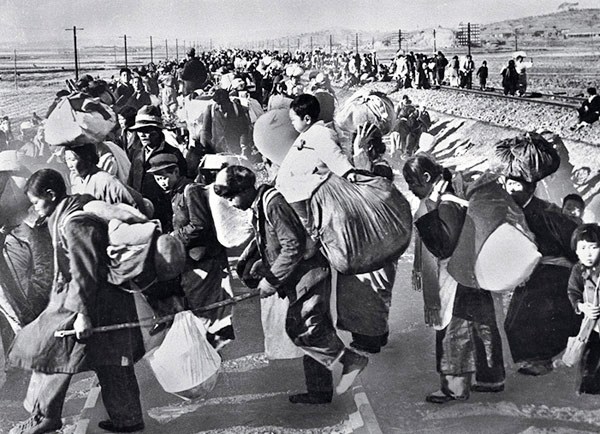
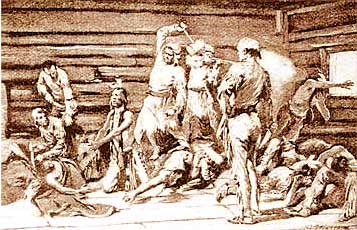

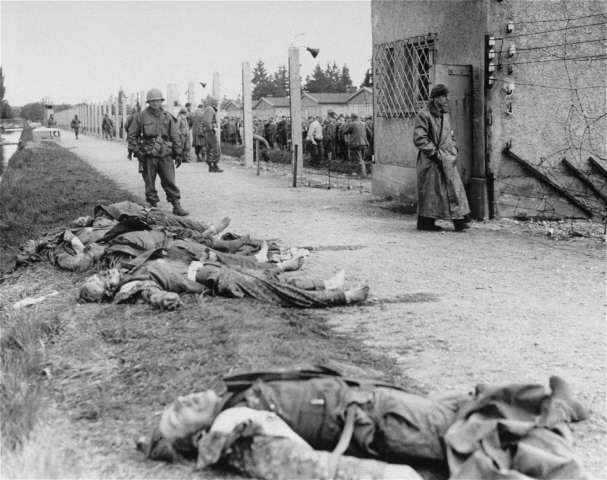
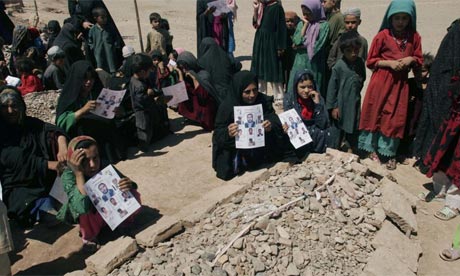
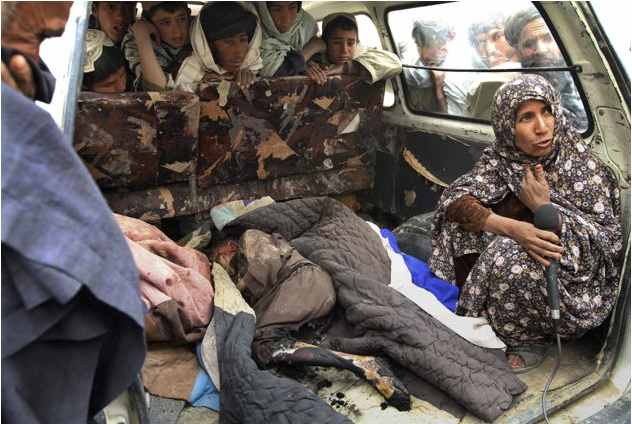
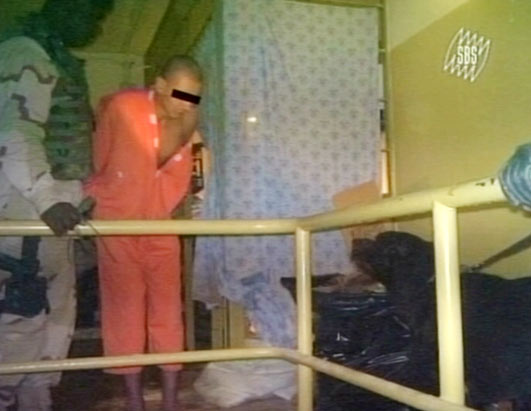
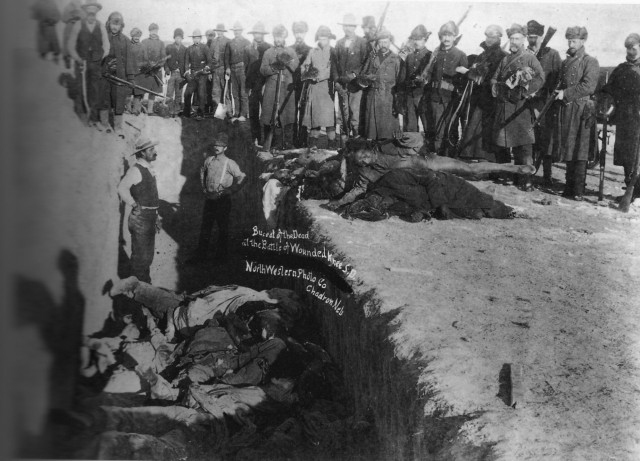

28 Comments
A few not on the list.
1. Firebombing of Tokyo, destroying half of the city and killing at least 1 million civilians.
2. Joint operation, firebombing of Dresden. Burned nearly all of the people alive in the city.
3. Dropping nukes on Japanese cities.
4. Sinchon Massacre.
There are at least 60 significant US war crimes in recent history.
During the first months of occupied Japan there were so many rapes, even of Children.
Tens of thousands were raped, and others killed. This was BTW after Japan had surrendered.
Many young girls and women had to kill themselves to not have to go through being raped.
In one event a group of US soldiers would come to a Japanese village and rape people every week, until the village people tricked them one time and ganged up on the and killed them and threw their bodies into a cave.
What US soldiers do is truly sickening, they are the real terrorists of the world.
This video confused the massacre in Korea with the Vietnam MyLai massacre … specifically naming Capt. Ernest Medina as being court martialed but acquitted in the Korean incident. Capt. Medina gave the orders to Lt. Calley which resulted in the MyLai massacre in 1968, Vietnam. Medina got away with it; Calley was the only one convicted but basically received a comparative slap on the wrist. Hardly mentioned in this case was that an American helicopter crew saw the massacre in progress. The three crewmen agreed to try to stop what they could, landed the helicopter between a group of Vietnamese civiltans and at gunpoint faced down the American troops who would have otherwise shot even more of the innocent that day. The pilot was Hugh Thompson, his gunner: Lawrence Colburn, & his crewchief was Glenn Andreotta. These three Americans deserve recognition.
American subhuman beings must be massacred.
Captain Ernest Medina was just 13 years old at the time of the massacre of civilian refugees in Korea. Remarkable as it is that he reached that rank at an age when most kids haven’t yet popped their first pimple, it’s even more remarkable that he was still serving at the same rank twenty years later, when he was accused, tried and acquitted for his role in another notorious massacre in a another war zone. And most remarkable of all, Medina’s earlier alleged murder of Korean civilians has been totally covered up—there no trace of it to be found anywhere in print or on the web. Nor is there any mention anywhere of his breaking all records for both earliest-ever promotion to captain, and longest-ever remaining at that rank while serving as an active-duty officer.
USA ARMY IS STILL MAKING WAR CRIMES WITHOUT A PANISHMED, LOOK
KOREA, VIETNAM, LIBYA, EGYPT, ISRAEL, AFGANISTAN, IRAQ AND TODAY
SYRIA, THEY WILL NEVER STOP UNTILL SOMEONE HARDLY PANISH THEM……
That list is so much BS, when we all know the greatest atrocities were committed right at home, here in the US, during slavery, with the senseless death of tens of thousands, for no real reason at all.
If this was a list of atrocities that might make sense. Read the title again and make sure you understand it.
Just because you people wasn’t at, “war” living at home, doesn’t mean my ancestors wasn’t, in this country. Does it make a difference how they died, whether it was at the hands of an enemy abroad, or those at home? So yes, I’m talking war that did far more damage to my race than any “war” has done in all history.
I think you forgot the “shock and awe” bombing of Iraq in which a minimum of 30,000 civilians were killed. non us military figures put the number much higher. We think of a massacre as being in person, on the ground, but our worst massacres occur from the air, with little or no danger to the pilots in our planes.
Ben ten ten that comment was not directed at you, I replied to your comment by accident. You are absolutely right. Hundreds of thousands of american slaves and their descendants were massacred, either in Africa, on the slave ships, under slavery and more than a hundred years after slavery. Again, I think we have a horror of immediate “on the ground” massacres that eclipses other types of murder we commit.
While Andersonville was a horrendous prison camp, Elmira in the north had a higher starvation, death and illness rate, and the north had both food and medicine. The women of New York would take the train up to Elmira to go visit the animals in the zoo.
The USA has double standards for their war crimes. No other nation got engaged in so many wars in the last hundred years. And everywhere their soldiers went they left a mess. Iraque, Korea, Vietnam, Afghanistan and many more would have been better off without US troops. And then there are such things like Nicaragua when the US under Reagan financed, equipped and trained terrorists, the Contras. With drug money!!! Or Chile, where the US installed a facisct regime under Pinochet and let him torture a whole nation. And then, where was the US in Rwanda? Oh, yes, of course. Rwanda has no oil… So there’s no need to play “world-police”…
And right now the US financed nationalists in the Ukraine to bring down a democratic government with riots. And at the same time they want to start sanctioning Russia for recognizing the Crimean independency! Double standards.
How about the firebombing of Dresden or firebombing of Tokyo?
They killed more people than either atomic bomb, but instead of being instantly vaporised, most people burned to death, suffocated or breathed toxic gases, or died in many other terrible ways.
Over 100000 people died in the firebombing of Tokyo.
Agreed. There was no reason to demand the surrender of the Japanese by attacking their mainland and killing hundreds of thousands of civilians. It is always the American (white) life deemed so precious. We lost just 3000 in the world trade attack and we had a collective national nervous breakdown. Not to belittle the tragedy , but people die every day in various ways. Why those 3000? We were grieving the fantasy of our invincibility, the fantasy that we can kill without anyone ever killing back.
,
,
Yes the nuking and the firebombing of Tokyo were immoral, same with the firebombing of Dresden. The US and UK were using the deliberate targeting of the civilian population to cause terror and as much damage as possible. Personally I find targeting civilians as immoral, as 99% of civilians in every country never had any power or say when it came to any war. They literally are just innocent people being slaughtered.
Around 3 million Japanese civilians died in WW2 as a result of the firebombings of Tokyo, Osaka, Nagoya and the nukes in Hiroshima and Nagasaki.
Even in 1950 the population in Tokyo was still only 5.3 million, when before the firebombing it was 6.7 million.
Yes Lisa is correct, Americans have a tendency to believe their life is so much more important. As if saying 1 American life = 100 foreign peoples lives. This is why America still sometimes on the media has a sob story about Pearl Harbour, a US military base that was attacked. Killing a few thousands soldiers.
Anyone who complains about a few thousands soldiers, when the US killed literally millions of Japanese civilians is clearly out of touch with objectivity and human decency.
The Germans suffered a similar fate, at least 2 million German civilians did die. And Churchill even bragged about this.
Dachau –
Correct in principle, but a misstatement:
Yes, 32,000 deaths at Dachau – but 16,000 of them were from a typhus epidemic that ran from about November 1944 to its liberation at the end of April 1945.
Additional facts:
1. The piles of dead bodies found by the GIs were not people killed by the German soldiers a Dachau. The train with around 3700 bodies arrived from Buchenwald with them starved to death already. 1300 survived the trip. At that point in the war, supplies to camps were zero. No food, no medicines, no ability to burn typhus victims. Yes, the GIs snapped at seeing that – but they were wrong to assign guilt to the guards at Dachau.
2. Dachau was also a prison for German soldiers who had been convicted of crimes. The REAL guards – and Kommandant – had left two days earlier. Before he left, the Kommandant freed the German soldier prisoners and assigning them to guard the prison. He told them, “It is the Americans coming – they will treat you well.”
3. So, the “guards” the Gis mowed down with machine guns were not even the people responsible for conditions in the camp or treatment of prisoners. They in fact murdered innocent Germans.
4. As the battle front collapsed, the Germans evacuated camp after camp, sending the prisoners to other camps farther from the front lines. The last major camp in this process – the one farthest from the front – was Dachau. Designed for 10,000, by April 1945 it had 30,000 – at the same time that no supplies were coming in – and in the middle of the typhus epidemic. (Hundreds died even after the Allies arrived, before they could get sufficient treatment – and those are included in the death totals for Dachau.) The skeletal prisoners that happened to be in Dachau at then end had not been starved in Dachau. Dachau was a work camp – NOT A DEATH CAMP – one that fed its prisoners and even gave them medical care, to keep them working. But all that fell apart at the end – in the months just before the GIs arrived. Typhus, 20,000 extra prisoners (some from death camps), no supplies – the conditions were appalling. When the GIs asked the skeletal prisoners what had happened to them, the GIs and their limited German language skills misunderstood: The tales they were being told were about Auschwitz and Buchenwald and the death camps, not what had happened at Dachau. The GIs believed that the prisoners had been starved at Dachau, but they weren’t (any more than the other prisoners in the final weeks). Even at the camp in Dachau are photos on display showing how well-fed the prisoners were. If any readers of this go to the camp, look especially at the photos of prisoners being evacuated to the south (the Tyrol) – almost none of whom made it that far before the war ended.
5. None of the above is to vindicate Dachau. Still 14,000 or so WERE killed there over its 12 year history (the bulk of them captured Soviets). That is much worse than Guanatanamo. You did NOT want to be a prisoner there.
I’m sorry!!!!
I’d also like to add this: what happened in Gnadenhutten was not all that uncommon. There were a lot of incidents where one side absolutely decimated the other. Another notable Revolutionary War massacre was in North Carolina – Pyle’s Massacre. There, colonial militia found a group of loyalist militia, disguised themselves, walked into the middle of the camp, shook hands, and then proceeded to kill and wound at leisure, leaving 93 dead and 250 wounded. The Brits were astounded and called it a war crime, claiming the men were begging for mercy while being butchered.
There were also plenty of reports of Native American groups massacring various militias in support of whatever side they were on.
It is a simple – if horrible – fact that every side of any major conflict commits war crimes. The sad – but equally horrible – fact is that only those that lose are ever charged with the crimes they committed.
OK… first let’s get rid of the trash, because not all of these are war crimes. War crime has a very specific definition that has changed with the times, but the problem here is that we are judging these actions in light of our modern understanding of war crimes rather than the context of the events and the times they took place in.
10. Is it a massacre? Sure. Was it wrong? Yes. Was it a war crime? No. The kind of warfare the US was facing at the time was pretty unique, and the fact that they were facing off against common citizens meant they needed to be wary (especially since young kids could serve in the US military). Smith’s overreaction was terrible and shameful, but not a war crime.
9. Ditto. Terrible event. The US should apologize. Not a war crime.
8. The Brits had actually surrendered in 1781, so the war was pretty much done – but the Treaty of Paris hadn’t been signed, so technically, it was still on. Either way, yeah – I’d call this a war crime, even in the terms of the times. It wasn’t performed by “official” American military – it was done by armed citizens who held a grudge and needed to get their murder on.
7. Andersonville wasn’t technically a war crime, but it was a terrible, terrible place. Plus, it wasn’t the property of the United States. It was the property of the Confederate States of America.
6. Sorry… no mercy from me for Nazis. I quote the guys in Saving Private Ryan… let ’em burn.
5. Again, this is a case of an unfortunately incident, not a war crime.
4. War crime by an individual. Perp caught, tried, and imprisoned for life. Good.
3. Another actual war crime by a limited number of individuals who were caught, tried, and imprisoned.
2. Not a war crime, but certainly a terrible event. Our treatment of Native Americans has always been poor.
1. There were a lot of incidents like My Lai – some war crimes, some not. Again, much like in the Philippine-American War, there was too much violence, too little knowledge, and too many opportunities for either side to fight those wars cleanly.
@ Permalink your comments are epic. You should apply as the official mascot for America F#*k yeah land.
I love my country, but I love history and context more.
You can not love history and love a piece of fabric at the same time, you need to choose.
Well, who wonders why the term “exceptionalism” is used in 99% of all cases for things the US has done?
Sorry but these are all war crimes, it’s true that in the past blatant war crimes were not considered war crimes as the idea of a war crime and international laws really didn’t exist.
Though we are going by the modern definition of what a war crime is, and every event here covers it. And so does the deliberate killing of civilians to invoke terror and mass death, in the modern world the firebombings of Dresden and Tokyo and the nuking of Japanese cities were all war crimes.
Sorry if you can’t accept that, they are crimes against humanity and also war crimes and everyone in the world agrees. Even most Americans agree, except a tiny minority of psychopaths like yourself who are individuals who likely would have liked to be part of some of these events, because you are a sicko.
Andersonville was not committed by the USA, but rather the CSA. The Confederate States of America was a traitorous OTHER COUNTRY at war with the USA.
There is nothing traitorous about secession. They wanted to leave the country, not rebel against it. It was their right to do so. And the “war” started because the Union refused to recall their troops from the Southern states.
This makes me sick! Studied sometime in an American school as a kid and I still remember the daily taunts and bullying by many American kids on kids from different countries who couldn’t so called adjust to their system. If you sow a tree of thorns you will get thorns and not apples.